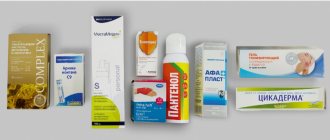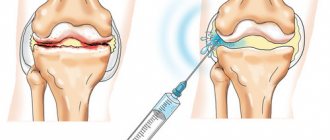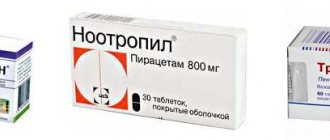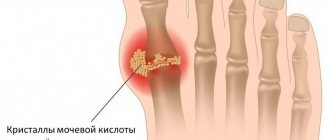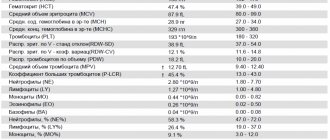09/15/2021 Non-steroidal anti-inflammatory drugs (NSAIDs or NSAIDs) are widely used against inflammatory processes in the body. Medicines are sold in tablet form, capsules, and dosage forms for external use. They not only have an anti-inflammatory effect, but also reduce temperature and also relieve pain.
The drugs have contraindications and side effects, so the doctor must select them, taking into account the individual characteristics and condition of the patient.
Introduction
Nonsteroidal anti-inflammatory drugs (NSAIDs) are among the most commonly used medications, both among prescription drugs and among over-the-counter drugs, i.e., used by patients themselves for self-medication without prescription. The frequency of use of NSAIDs in clinical practice is due to the spectrum of their pharmacological effects: analgesic, anti-inflammatory, antipyretic, antiaggregation (acetylsalicylic acid). However, a wide range of therapeutic effects and high clinical effectiveness also have a downside: NSAIDs are among the group of drugs that most often cause adverse drug reactions (ADRs) associated with toxic effects, hypersensitivity, drug and food interactions. Therefore, the clinician faces a difficult task: selecting NSAIDs for a specific patient.
The choice of drug is carried out according to a certain algorithm.
- Determination of indications for use of a medicinal product , which is determined by the clinical diagnosis of the patient: the underlying disease, the presence of comorbid pathology, complications, concomitant diseases. Of great importance is the assessment of risk factors for the development of complications of drug therapy: allergy history; previously identified symptoms of drug intolerance; concomitant therapy, including the use of herbal remedies, vitamin preparations, over-the-counter medications, dietary supplements; the patient's dietary preferences, alcohol abuse, smoking.
- Having determined the indication (“problem” of the patient), the doctor selects a group of drugs and a specific drug within this group, based on the criteria of effectiveness, safety, cost and ease of use.
- Having decided on the choice of a specific drug, the doctor chooses the mode of use of the drug: dose, frequency of use, duration of therapy.
- The doctor explains to the patient in an accessible form what is wrong with him and why the symptoms that bother him appeared, provides information about possible non-drug methods for correcting the pathological condition, explains to the patient why this drug was chosen and what the patient should pay attention to when using this drug, if any symptoms, he should immediately consult a doctor and even stop taking the drug. Almost 50% of cases of ineffective pharmacotherapy are due to low patient compliance, which is why it is so important to achieve cooperation with the patient and his compliance with the drug therapy regulations.
- During the treatment process, the doctor himself evaluates the effectiveness and safety of the pharmacotherapy being carried out, decides on the indications for prescribing protective therapy, stopping/prolonging treatment when the goal is achieved, or changing the drug if it is ineffective.
The implementation of this algorithm is possible only if the doctor is well aware of the indications for use and the clinical and pharmacological properties of the selected drug.
Mechanism of action of painkillers
When tissue damage or inflammation occurs, a signal travels along the nerve endings to the brain. In the damaged area, irritation of the nerve endings occurs. As a result of muscle contraction, a spasm occurs.
Painkillers act as follows:
- inhibit nerve impulses that transmit pain;
- soothe irritated nerve endings;
- relieve muscle spasms.
Depending on the type of pain, painkillers are used.
Features of the use of NSAIDs in clinical practice
As mentioned above, the main pharmacodynamic effects of NSAIDs are: analgesic, anti-inflammatory, antipyretic. Thus, drugs in this group are used for diseases of the musculoskeletal system, joints, postoperative pain, tension headaches, migraines, dysmenorrhea, renal and hepatic colic, chronic pain syndrome, colds, and fever.
The effectiveness of a drug is determined by a number of factors: the mechanism of action, bioavailability (the percentage of the dose taken that enters the systemic circulation), metabolic characteristics, concentration in the blood and tissues of the body, the rate of development of the therapeutic effect and the duration of its retention. The safety of using a drug depends on the mechanism of action and characteristics of metabolism, excretion of the drug, and its ability to enter into drug interactions.
The mechanism of action of NSAIDs is due to their ability to inhibit the enzyme cyclooxygenase-2 (COX-2) at the site of inflammation (Fig. 1). It is COX-2 that takes part in the formation of pro-inflammatory prostaglandins, which potentiate the activity of inflammatory mediators (histamine, serotonin, bradykinin) that activate pain receptors; participate in controlling the activity of the thermal regulation center, promote cell proliferation, mutagenesis and destruction [1, 2]. At the same time, NSAIDs also block cyclooxygenase-1 (COX-1), which is present in all organs and ensures normal physiological processes (synthesis of protective stomach mucus, some stages of hematopoiesis, filtration and reabsorption in the kidneys). There is also “constitutive” COX-2, which is found in high concentrations in the brain, bones, organs of the female reproductive system, and kidneys, ensuring their normal functioning.
Additional mechanisms of anti-inflammatory action of NSAIDs are:
- inhibition of interleukin-1 synthesis activity;
- suppression of neutrophil function and interaction of leukocytes with the vascular endothelium;
- inhibition of activation of NF-kB (transcription factor), which regulates the synthesis of “pro-inflammatory” mediators;
- activation of PPARs (peroxisoma proliferator activated receptors).
- A decrease in the synthesis of “beneficial” prostanoids underlies the mechanisms of development of ADRs when using NSAIDs.
NSAIDs can be divided into two groups: non-selective COX inhibitors (ibuprofen, diclofenac, naproxen, etc.) and selective, predominantly inhibiting COX-2 (meloxicam, nimesulide, coxibs). When using drugs of the second group, NSAID gastropathy and NSAID enteropathy, gastrointestinal bleeding develop much less frequently, but the risk of complications from the cardiovascular system increases [1]. The effect of NSAIDs increases with increasing dose of the drug, while at maximum doses the selectivity of the action of selective NSAIDs decreases (Fig. 2) [3].
It should also be noted that when using medium and high doses of various NSAIDs, their effectiveness is comparable, which follows from the results of multicenter clinical studies that compared the analgesic and anti-inflammatory effects of NSAIDs in injuries, operations and diseases of the musculoskeletal system. Thus, a meta-analysis of data from 29 randomized clinical trials (n=18,000) assessed the effectiveness of various NSAIDs in osteoarthritis. The differences in pain reduction (in visual analogue scale millimeters) between NSAIDs and placebo were:
- for naproxen 1000 mg/day - 12.9 (95% confidence interval (CI) - 8.2–17.7),
- ibuprofen 2400 mg/day - 9.0 (95% CI 5.0–13.1),
- diclofenac - 16.2 (95% CI 11.7–20.6),
- celecoxib 200 mg – 14.7 (95% CI 12.1–17.3),
- etoricoxib 30 mg – 14.2 (95% CI 12.6–16.8),
- etoricoxib 60 mg – 16.2 (95% CI 12.7–19.8) [4].
There is an opinion that intravenous or intramuscular administration of the drug provides a faster and more pronounced therapeutic effect than taking the drug orally. However, this position is not confirmed by data from clinical studies [5]. A systematic review of 26 RCTs (n=2225) analyzed the effectiveness of NSAIDs administered parenterally, rectally, or orally. Indications for the prescription of NSAIDs were musculoskeletal diseases, postoperative pain, dysmenorrhea, and renal colic. There were no significant differences in the analgesic effect of various dosage forms of NSAIDs, with the exception of renal colic, in which a significant advantage of intravenous NSAIDs compared with oral administration was shown [6].
Thus, the following conclusions can be drawn [1].
- All NSAIDs in adequate anti-inflammatory (average and maximum) doses with long-term use have equal analgesic potential (evidence level 1a).
- The effectiveness of NSAIDs depends on the dose. The use of higher doses provides more pronounced analgesic and anti-inflammatory effects (evidence level 1b).
- There is no evidence that injectable or rapidly dissolving oral NSAIDs are superior to oral NSAIDs for longer than 1 day of treatment (LE: 1b).
Immunomodulators
Immunomodulators are medications to correct the functioning of the immune system. We resort to immunomodulators when it is necessary to increase, decrease or regulate the activity of a particular immune mechanism.
The immune system is our main defender. It saves us from pathogenic microbes, fungi, parasites and cancer cells. For medical purposes, it is customary to consider three parts of the immune system:
- Cellular immunity. It is determined by the presence and activity of different types of white blood cells (leukocytes).
- Humoral (immunoglobulin) immunity. Immunoglobulins are special proteins that can recognize harmful biological and chemical factors that have entered the body.
- Cytokines are special protein molecules that mainly provide communication and coordination between immune cells. The blood test mainly evaluates the content of interferons (a subtype of cytokines); they are especially important for fighting viral infections. In addition, cytokines play an important role in autoimmune inflammation (tumor necrosis factor, IL-6, etc.).
All parts of the immune system work in close relationship with each other.
The selection of immunomodulators is made according to immunological blood tests . Modern immunomodulators make it possible to selectively influence one or another deviation in the functioning of the immune system.
Interferon inducers (Cycloferon, Panavir, Neovir, Kagocel, Amiksin, etc.). They increase the production of interferons. We often use them for chronic viral infections, together with antiviral drugs.
Interferon preparations (Viferon, Human Interferon, Anaferon, etc.). They replace their own interferon and thereby improve the function of the immune system. We use them in cases of significant interferon deficiency.
Regulators of cellular immunity (Galavit, Polyoxidonium, Lykopid, etc.). They stimulate (regulate) the activity and production of white blood cells. The drug Polyoxidonium is approved for use in rheumatic pathology, because does not stimulate autoimmune reactions. The drug Galavit is interesting because it blocks the production of TNF (tumor necrosis factor), which is involved in joint inflammation in autoimmune arthritis.
Thymodepressin is a new promising drug for suppressing the excessive production of aggressive immune cells. One of the safest immunosuppressants. Has proven itself in the treatment of psoriatic arthritis. Promising in the treatment of rheumatoid arthritis, ankylosing spondylitis, and vasculitis.
Risk of adverse drug reactions when using NSAIDs
Since the effectiveness of NSAIDs in therapeutic doses is comparable, when choosing NSAIDs for a particular patient, we proceed from the possible risks of developing ADRs (Table 1) [1]. Risk factors for the development of ADRs when using NSAIDs are: age over 60 years, overweight, smoking, history of gastric and duodenal ulcers, history of venous thrombosis and thromboembolism, coronary artery disease, cerebrovascular disease, peripheral atherosclerosis, arterial hypertension, lipid metabolism disorders , diabetes mellitus, diseases of the intestines, liver, kidneys, blood, congestive heart failure, chronic alcohol intoxication, combined use of medications that interact with NSAIDs, lactation. For a more differentiated selection of NSAIDs, a special algorithm was proposed, which involves the prescription of selective NSAIDs to patients with risk factors for developing gastrointestinal complications and the use of NSAIDs with a less pronounced toxic effect on the cardiovascular system in patients with high cardiovascular risk, as well as the prescription protective therapy (Table 2) [1].
According to Russian recommendations for the rational use of NSAIDs:
- the main method of preventing the development of ADRs when using NSAIDs is taking into account risk factors, their correction (if possible) and prescribing NSAIDs with a more favorable gastrointestinal (recommendation grade A) and cardiovascular safety profile (recommendation grade B);
- an additional method of preventing complications from the upper gastrointestinal tract is the prescription of proton pump inhibitors (PPIs) (grade of recommendation A);
- an additional method for preventing complications from the upper gastrointestinal tract, small and large intestine can be the prescription of rebamipide (gradation of recommendation B);
- There are no effective drug methods of nephro- and hepatoprotection to reduce the risk of NSAID-associated complications.
Types of pain
There are different types of pain.
Experts divide all pain into two categories:
- acute, appears suddenly, usually due to injury, does not last long;
- chronic, lasts a long time, occurs as a result of chronic inflammation.
When taking medications for pain, you should consider the type of pain. In some cases, it is prohibited to use painkillers. For example, with acute abdominal pain. This way the disease can be veiled, as a result doctors will not be able to accurately diagnose the disease.


